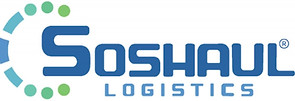Hauling Cross-Border Freight
- Dr. Sean Goffnett & Samantha Allen

- Nov 20, 2023
- 4 min read
What is cross-border or international freight?
Cross-border freight (also known as international freight) is just that – freight that crosses from one country into another.

What’s the difference between international, interstate, and intrastate trucking?
These terms can be easy to confuse. Let’s put it this way:
International = crossing from one country to another
Interstate = crossing from one state to another
Intrastate = moving freight within a single state (not crossing state lines or borders)
How do I cross the Mexican Border with freight?
There are typically two methods for cross-border shipping through the US/Mexican border, Transloading and Through Trailer.
Transloading
Let’s first discuss the transloading method – there are typically 3 carriers involved in this process. A U.S.-based carrier will pick up the load from the U.S. shipper, arrive at a facility near the border, and drop the trailer for a cross-border carrier to pick up. The crossing carrier will need to clear U.S. Customs, cross the border, and clear Mexican Customs to then arrive at a facility near the border to transload the freight onto a Mexican carrier trailer. This is typically the custom’s broker facility. The Mexican carrier will then make the final delivery and the crossing carrier will return the now empty trailer used to cross the border back to the U.S.. The process is very similar for goods coming from Mexico and into the U.S.
Through Trailer
Another method is the Through Trailer method, which involves using a single trailer but multiple drivers. Typically, three drivers will be involved, and this includes a U.S. driver, a crossing driver, and a Mexican driver. A U.S. driver will pick up the shipment from a U.S. shipper and drop the trailer at a facility near the border. The crossing driver will then be dispatched to pick up the trailer from the facility to clear U.S. customs, cross the border, clear Mexican customs, and drop the trailer at a facility or carrier counterpart yard close to the border. A Mexican driver will then be dispatched to pick up the trailer and make the final delivery in Mexico.
You can read more about the documents required for cross-border shipping here.
Before you arrive at the border, ensure that the shipment is legal to cross. Things like certain medications, second-hand clothes, and even various types of fish are illegal to cross into Mexico. Mexican customs inspections can be lengthy, impacting estimated arrival times. Part of this inspection can involve you having to prove that the truck is in good working condition, so be sure to have the vehicle inspected and keep the documentation. Again, you must have a valid passport, social security card, and CDL as well as proper vehicle documentation, permits, and stickers such as IFTA/IRP.
How do I cross the Canadian Border with freight?
To cross the US/Canadian border you will need a CBSA (Canada Border Service Agency) 4-character code - this code allows you to enter and transport goods within Canada. You will need customs clearance. We will talk more about pre-clearance through the PAPS/PARS system shortly. You will also need proper registration and insurance, and your IRP (International Registration Plan) registration cab card that is issued from your home jurisdiction (see your jurisdiction's IRP website to learn more about who is required to register). Also, you should be aware that Canada requires you to have a general freight liability minimum coverage of $1 million versus the FMCSA's minimum standard of $750,000 – Cargo coverage requirements may vary depending on gross vehicle weight. Keep in mind that you must have a valid passport, social security card, and CDL as well as proper vehicle documentation, permits, and stickers such as IFTA/IRP.
What are PARS (Pre-Arrival Review System) and PAPS (Pre-Arrival Processing System)?
PARS and PAPS are both cargo labeling systems for Canada and the U.S. respectively. They are a system of barcode labels placed on shipping invoices that border service agents scan to tell them whether they can release the goods or send them on for inspection. Both PARS and PAPS work with ACE and ACI (see our course bundle to learn more). Both systems work the same with the only real difference being that PARS is the Canadian version whereas PAPS is the U.S. version. This is so there is uniformity in the process allowing for faster processing times. A PARS code is a series of eight numbers, the first four being the unique Highway Carrier Code that each highway carrier has, the last four digits are a series of cargo control numbers. A PAPS code's first four digits are the Standard Carrier Alpha Code (SCAC) that each US highway carrier must have, and the last four digits are the shipment control numbers.
You can learn more about the following cross-border topics by enrolling in our course bundle:
Free and Secure Trade Program (FAST)
Automated Commercial Environment (ACE)
How to obtain PARS or PAPS numbers
Ready to START, DRIVE, & ACCELERATE your trucking business? Check out our course here!

Interested in being notified when more free resources are available? Subscribe down below and you'll be the first to know!
Soshaul Logistics LLC and its affiliates do not provide tax, legal or accounting advice. This material has been prepared for informational purposes only, and is not intended to provide, and should not be relied on for, tax, legal or accounting advice. It is meant to serve as a guide and information only and Soshaul Logistics, LLC does not assume responsibility for any omissions, errors, or ambiguity contained herein. Contents may not be relied upon as a substitute for the FMCSA's published regulations. You should consult your own tax, legal and accounting advisors before engaging in any transaction or operation.




Comments